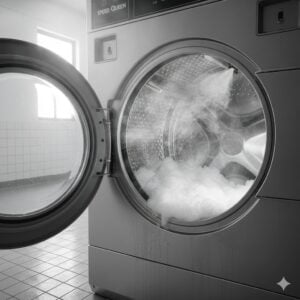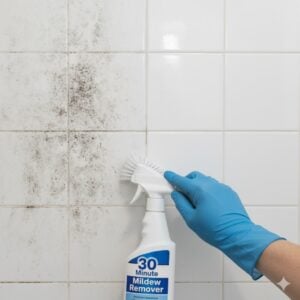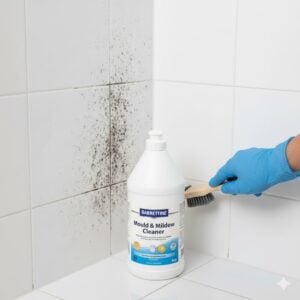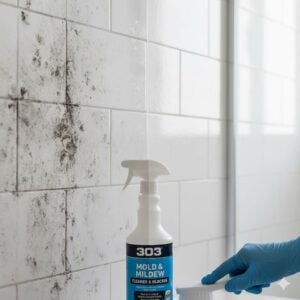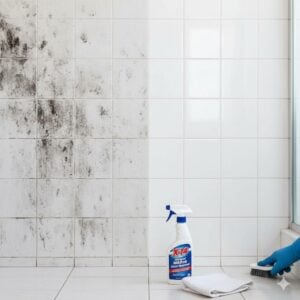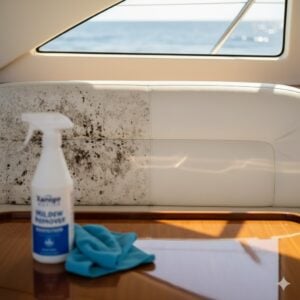When your bathroom drains smell like sewage, it can feel overwhelming and unpleasant. This problem is common in UAE homes because of the hot and humid climate, the way water systems are designed, and how often drains are used. The smell is not only bad for comfort—it may also point to plumbing or hygiene issues that need immediate attention. Understanding why drains smell like sewage and learning how to eliminate and prevent it can save you stress, protect your health, and make your home a fresher place to live.
Table of Contents
ToggleWhy Do Bathroom Drains Smell Like Sewage?

Sewage odors from bathroom drains usually happen for a few main reasons. Here are the most common causes:
- Dried P-traps: A P-trap is the U-shaped pipe under your sink or floor drain that holds water to block sewer gases. If it dries out because the drain isn’t used, gases escape and smell up the bathroom.
- Blocked drains: Hair, soap, grease, and dirt build up inside pipes, creating bacteria that produce foul odors similar to sewage.
- Sewer line issues: If there’s a crack, blockage, or pressure problem in the sewer line, gases can come back up through your bathroom drains.
- Poor ventilation: Sewer systems rely on vent pipes to release gases outside. If vents are blocked or poorly designed, gases can push into your bathroom instead.
- Toilet or pipe seal leaks: A cracked toilet wax ring or leaking pipe joint can allow sewer gas to escape into the bathroom.
- Mold and bacteria: Moisture and hidden organic matter in drains encourage bacteria growth, which often smells like sewage.
Identifying which of these is the cause helps you know the best way to fix it.
How to Tell If the Smell Is Serious
Not every bad drain smell means a big problem, but some signs should not be ignored:
- Temporary smell: If the odor disappears after flushing water down the drain, it was likely a dried trap.
- Persistent smell: If the smell stays even after cleaning, it could be a sewer line or ventilation issue.
- Health symptoms: If you or your family feel headaches, nausea, or eye irritation, sewer gas exposure may be too high.
- Spreading odor: If the sewage smell spreads to other rooms, the problem may be in the main sewer line.
It’s important to treat sewage smells seriously because sewer gases are unhealthy in the long run.
Quick Fixes for Bathroom Drain Smells
If the sewage smell just started, try these steps before calling professionals:
- Flush drains with water: Pour one to two liters of water into rarely used drains to refill the trap.
- Hot water flush: Pour boiling water slowly into the drain to remove buildup.
- Baking soda and vinegar: Add ½ cup baking soda, then 1 cup vinegar. Let it bubble for 15 minutes before rinsing with hot water.
- Check toilet base: See if the toilet is loose or wobbly. If yes, the seal might be broken.
- Clean drain covers: Remove covers and scrub away trapped hair, soap, and dirt.
These methods often work for simple cases like dried traps or light buildup, but stronger smells may need more effort.
Deep Cleaning Methods
For stronger odors, a deeper approach is necessary:
- Enzyme drain cleaners: These use natural enzymes to digest organic matter and bacteria inside pipes.
- Manual drain cleaning: Use a plumber’s snake or drain brush to remove heavy clogs.
- Disinfecting solution: Mix bleach with water (1 part bleach to 10 parts water) and pour into drains, letting it sit before rinsing thoroughly. Note: never mix bleach with vinegar or other chemicals.
- Seal inspection: Check under sinks and around toilets for leaks or loose fittings, then reseal as needed.
These steps target deeper sources of odor and help prevent sewage smells from coming back quickly.
When to Call Professionals
If your bathroom drains smell like sewage even after cleaning, it may be time for expert help. Situations that require professional intervention include:
- Sewer gas odor that doesn’t go away with flushing or cleaning
- Drain odors affecting multiple bathrooms or spreading into hallways
- Slow or gurgling drains suggesting a blocked sewer line
- Mold growth around drains, tiles, or walls due to hidden leaks
Professional cleaning services in the UAE often use drain cameras, smoke tests, and eco-friendly odor neutralization techniques. They can detect broken pipes, hidden leaks, or severe blockages that DIY methods cannot solve.
Prevention Tips to Keep Drains Fresh
Once your drains are clean, preventing odors is the next step. Here are some simple habits that help:
- Run water into all drains weekly to keep P-traps full.
- Use strainers to catch hair and soap scum before it goes into drains.
- Flush drains with baking soda and hot water once a week.
- Keep bathroom surfaces dry to reduce mold growth.
- Service your exhaust fan and ventilation ducts regularly.
- Check toilet and sink seals once or twice a year to make sure they are intact.
Small, consistent actions prevent most odor problems and keep your bathroom smelling clean and welcoming.
Why This Problem Is Common in UAE Homes
UAE bathrooms face unique challenges that make sewage smells more likely:
- High humidity: Traps evaporate faster, especially in summer months.
- AC condensation: Cooling systems often connect to drains, which may dry out and release odor.
- Closed environments: Many bathrooms have no windows, relying only on mechanical ventilation.
- Heavy water usage: Frequent showers increase the risk of clogs from soap and hair.
Because of these factors, homeowners in the Emirates should be extra careful about maintenance and quick to act on bad smells.
Conclusion
If your bathroom drains smell like sewage, don’t ignore it. The odor may come from something simple like a dry trap or something serious like a damaged sewer line. Start with easy fixes such as flushing drains, using baking soda and vinegar, and cleaning drain covers. If the problem continues, professionals can identify and remove the source completely. By combining quick action with smart prevention habits, you can ensure your bathroom stays fresh, hygienic, and comfortable for everyone in your home.








